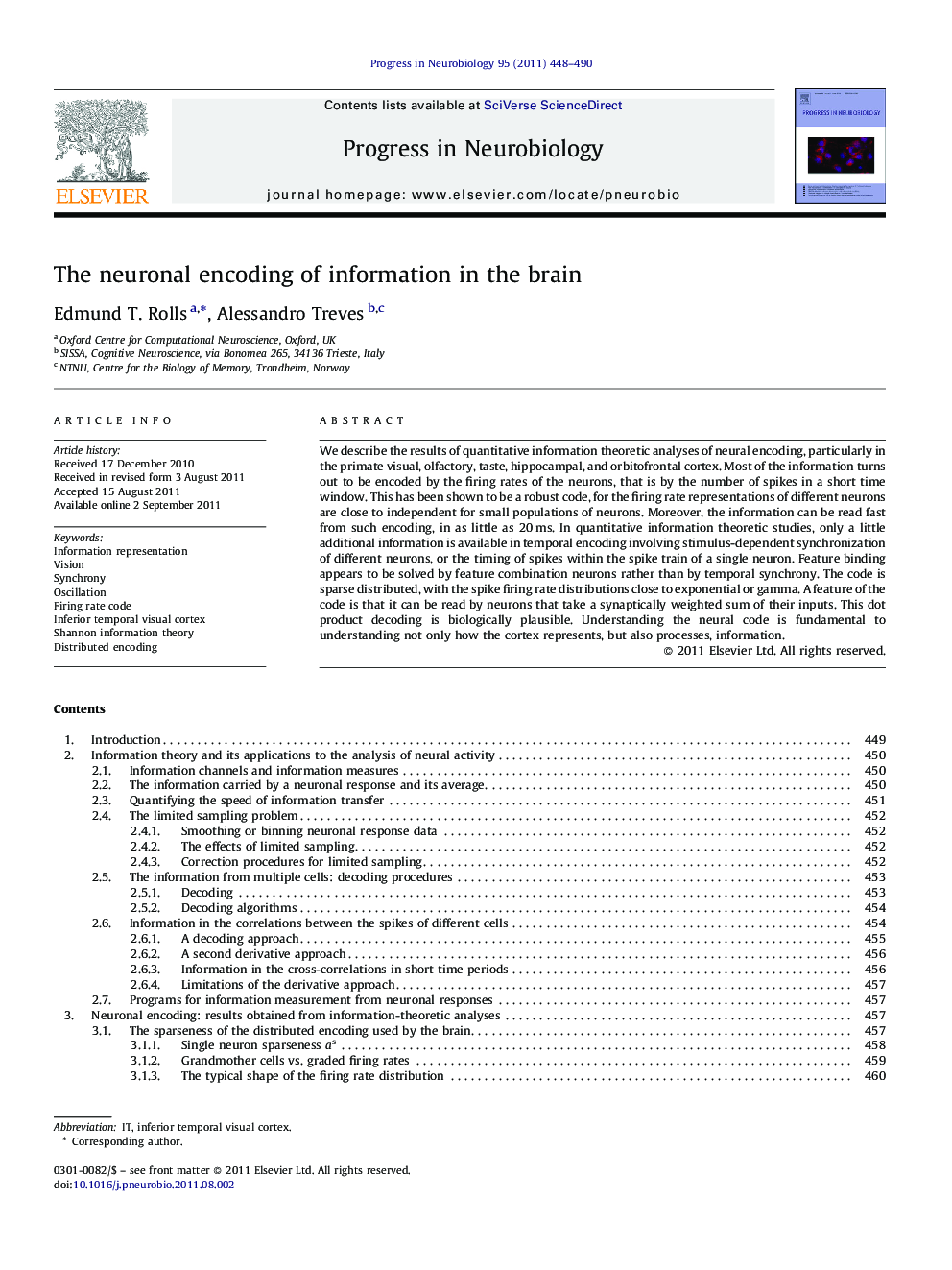| Article ID | Journal | Published Year | Pages | File Type |
|---|---|---|---|---|
| 4353594 | Progress in Neurobiology | 2011 | 43 Pages |
We describe the results of quantitative information theoretic analyses of neural encoding, particularly in the primate visual, olfactory, taste, hippocampal, and orbitofrontal cortex. Most of the information turns out to be encoded by the firing rates of the neurons, that is by the number of spikes in a short time window. This has been shown to be a robust code, for the firing rate representations of different neurons are close to independent for small populations of neurons. Moreover, the information can be read fast from such encoding, in as little as 20 ms. In quantitative information theoretic studies, only a little additional information is available in temporal encoding involving stimulus-dependent synchronization of different neurons, or the timing of spikes within the spike train of a single neuron. Feature binding appears to be solved by feature combination neurons rather than by temporal synchrony. The code is sparse distributed, with the spike firing rate distributions close to exponential or gamma. A feature of the code is that it can be read by neurons that take a synaptically weighted sum of their inputs. This dot product decoding is biologically plausible. Understanding the neural code is fundamental to understanding not only how the cortex represents, but also processes, information.
► Neuronal encoding in the primate visual, olfactory, taste and hippocampal cortex. ► Most of the information is encoded by the firing rates of the neurons. ► Little additional information is available in stimulus-dependent synchronization. ► The population information increases close to linearly with the number of neurons. ► The code is sparse distributed, with firing rate distributions exponential or gamma.
